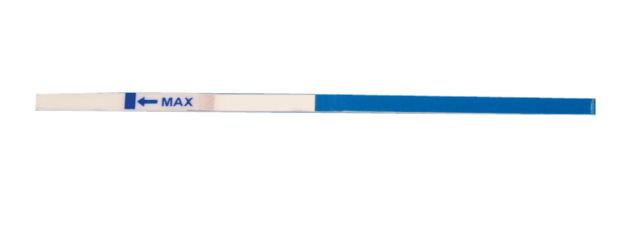Pregnancy test There are two kinds of pregnancy tests: urine tests, which women can use in the privacy of their homes, and blood tests which must be done by an obstetrician’s office. The urine tests done at home are also run at doctors’ offices. Both home and office tests check for the presence of human chorionic gonadotropin (HCG) hormone in the urine. HCG is produced by cells that eventually form the placenta.

The hormone first enters a woman’s
bloodstream when the fertilized egg implants into the lining of her uterus, sometimes as early as six days after the egg has been fertilized. After that, pregnancy test the levels of HCG increase very rapidly – often doubling every 48 hours for a time. Once the levels are detectable in a woman’s urine, her pregnancy test should show positive.
Eggs take about one week to travel from the ovary to the uterus after ovulation. The egg can be fertilized any time during its travels or once it reaches the uterus. HCG only begins production after the fertilized egg implants. It can be hard to predict exactly when fertilization occurred because sperm cells can live for up to five days inside the woman’s body. For this reason, most home pregnancy tests advise women to wait until they are at least two or three days late for their periods – or approximately 15 to 16 days after ovulation – before they take a pregnancy test.
The
obstetrician might recommend a blood test done to determine the exact level of HCG in your system. Sometimes a blood test might be needed if they suspect a problem or are concerned about a possible miscarriage. There are two kinds of blood tests done at an OB’s office. A quantitative test measures the amount of HCG in the blood, while a qualitative test simply indicates if the hormone is present or not.
Women who have irregular menstrual periods may have a more difficult time scheduling an at-home urine pregnancy test. Irregular periods are those that have fewer than 21 days between them or that occur more than 35 days apart. Periods that vary from month to month are also considered irregular. In these cases, women should count 36 days from the start of their last period of four weeks from the last time they had unprotected sex before they try a home pregnancy test.
